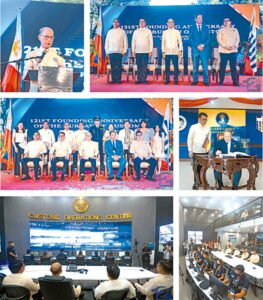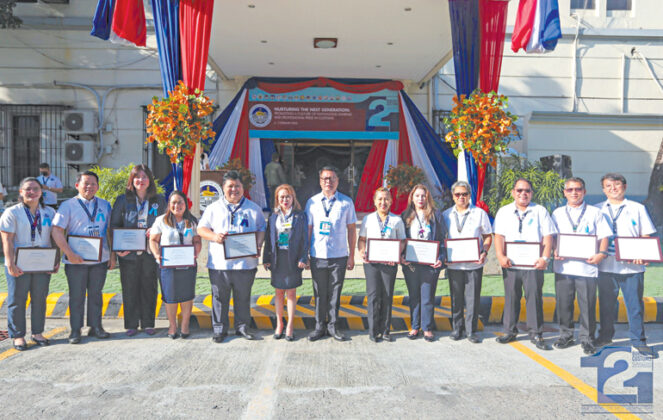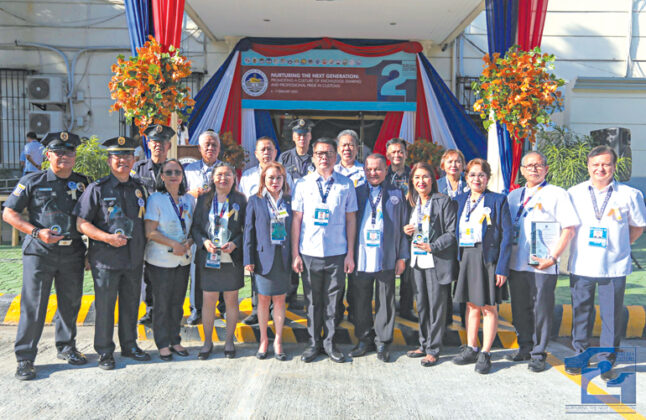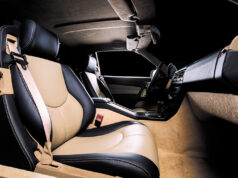Customs service through the years

Trade is widely seen at the center of economic development. But, on the other hand, when the trade is illicit or goods are smuggled, economic growth could be held back. Hence, it is crucial to make trade facilitation efficient and bolstering border security — a duty handed over to the Bureau of Customs (BoC).
The BoC has been taking on the supervision of import and export cargoes; the prevention and suppression of smuggling; and ensuring lawful collection of revenues. This February, the agency remembers how it has transformed since it was first established as the Philippine Customs Service 121 years ago.
Yet, even as the agency was instituted only in 1902, the history of customs service and trade in the Philippines dates many centuries back, even before the coming of the West to the country. The Philippines has already been trading with its neighbor countries, with the people adopting the barter system of commodities as money were not the medium of exchange then. Before permitting the merchants to engage in their trade, the datus or rajahs collected tributes from them. This, according to BoC, is the country’s earliest form of a tariff.
But just as trade has a long history, so does smuggling. There were merchants who deem the tribute was excessive, thus resorting to evade paying by unloading their goods through concealment and deception, which the BoC considered as smuggling in its primitive form.
The practice of collecting tributes was followed as the Customs Law of the Land.
During the Spanish colonization, when nearly all of the country’s trades became under the full control of Spain, three important statutes involving customs were passed. These included the Spanish Customs Law, which was a concept of ad valorem levied on import and export; the establishment of a Tariff Board, which drew up a tariff of fixed values for all imported articles on which 10% ad valorem duty was uniformly collected; and another Tariff Law in 1891 that lasted until the end of Spanish colonization of the Philippines, which established the specific duties on all imports and certain exports.
The enforcement of the Spanish Tariff Code of 1891 carried on when the Americans came to the Philippines. It remained in effect until the Tariff Revision Law of 1901 was enacted by the Philippine Commission.

On Oct. 24, 1900, Act No. 33 was passed, which abolished and changed the position of Captain of the Port to Collector of Customs in all ports of entry except the Port of Manila, where the former designation was retained.
The Philippine Commission passed more important laws during the formation of the Civil Government. Among these were the Tariff Revision Law of 1902; the Philippine Administrative Act No. 355, which was followed by the Customs Service Act No. 355 known as the Philippine Customs Service Act; and the Public Act No. 430, which changed the Philippine Customs Service into the Bureau of Customs and Immigration under the supervision and control of the Department of Finance and Justice. When the Department of Justice was separated, the customs service remained under the Department of Finance up until the present.
The Bureau of Immigration eventually became a separate office from the BoC through the Commonwealth Act No. 613.
In 1957, Congress enacted the Republic Act No. 1937 known as the Tariff and Customs Code of the Philippines. It was otherwise known as the “Tariff Law of the Republic of the Philippines,” becoming the first official expression of an autonomous Philippine Tariff Policy.
The law revising the Tariff & Customs Code of the Philippines was passed by Congress in 1972. But before it could be implemented, Proclamation No. 1081 was issued, which declared Martial Law in the country.
On Oct. 27, 1972, the late former President Ferdinand E. Marcos signed Presidential Decree No, 34, which amended the Tariff & Customs Code of the Philippines. On June 11, 1978, the Tariff & Customs Code was further amended, modified, and supplemented by new positions to make the code responsive in accordance with the then New Society’s developmental programs.
The Tariff & Customs Code had to be revised again with the country’s accession to the Customs Co-Operation Council (CCC) so the country’s tariff system would be aligned with the CCC Nomenclature. This led to the Tariff & Customs Code of 1982, revised by virtue of Executive Order No. 688, which is currently enforced.
Several reorganizations took place at the BoC. From the one pursuant to Customs Administrative Order No. 4-65 by authority of Sec. 550 and 551 of the Revised Administrative Code of Republic Act No. 4164 in 1965; the amendment of the Customs Administrative Order No. 4065; the Presidential Decree No. 1 that took effect in 1972; to the Presidential Decree No. 689 in 1975. The BoC’s last major reorganization happened through Executive Order No. 127 after the EDSA Revolution in 1986.
When the computerization program initiated to be implemented, the Management Information System and Technology Group (MISTG) of BoC had to be created in 1998.
Today, the BoC continues to work on its duties on border control, trade facilitation, and lawful revenue collection in the country, with the hopes of becoming a modernized and credible customs administration.
But throughout its 121-year history, the BoC’s journey was not without controversies. It has received a negative impression from the general public, as some regarded it as the “most corrupt” government agency.
In his article published on the WCO (World Customs Organization) News website in 2021, then-Customs Commissioner Rey Leonardo B. Guerrero shared that he was met with abundant challenges when he was appointed in the position in October 2018. These included administrative to operational concerns and systemic deficiencies, which put BoC at risk to corrupt practices. The former commissioner and his team had therefore been doing the work to reform the negatives, for the organization’s transformation, and execute their mandate.
The BoC recounted that it has been in “a state of flux” since the end of October 2018. Former President Rodrigo R. Duterte had directed to put drastic measures in place to address graft and corruption in the agency. In 2019, the BoC began its era of reform and innovation.
In 2020, the Customs Memorandum Order No. 08-2020 took effect, which detailed the guidelines in the implementation of the Zero-Contact Policy. One of the objectives of the policy is to “promote a regime free of perception of graft and corruption by minimizing face-to-face transaction” in the BoC.
Among other initiatives implemented to transform the agency was the Customs Computerization Program. As automation is already part of the BoC’s 10-point priority program in 2019, it has helped the agency manage the situation during the COVID-19 lockdown. As of July 2022, over 91% of Customs processes have been automated. The BoC looks to full digitalization of its processes this year.
Former Commissioner Yogi Filemon L. Ruiz said the BoC carries on with collaboration efforts for the digitalization of customs processes. It also continues enhancing trade facilitation, intensifying border control initiatives, and bettering revenue collections.
“We are confident that with the leadership of our President Ferdinand R. Marcos, Jr. and the guidance of our Finance Secretary Benjamin E. Diokno, we will be able to achieve our goals again this year and for the years to come,” Mr. Ruiz said.
The BoC celebrated its 121st anniversary this February, with the adoption of WCO’s theme for 2023, “Nurturing the Next Generation by Promoting a Culture of Knowledge-sharing and Professional Pride in Customs.” — Chelsey Keith P. Ignacio






